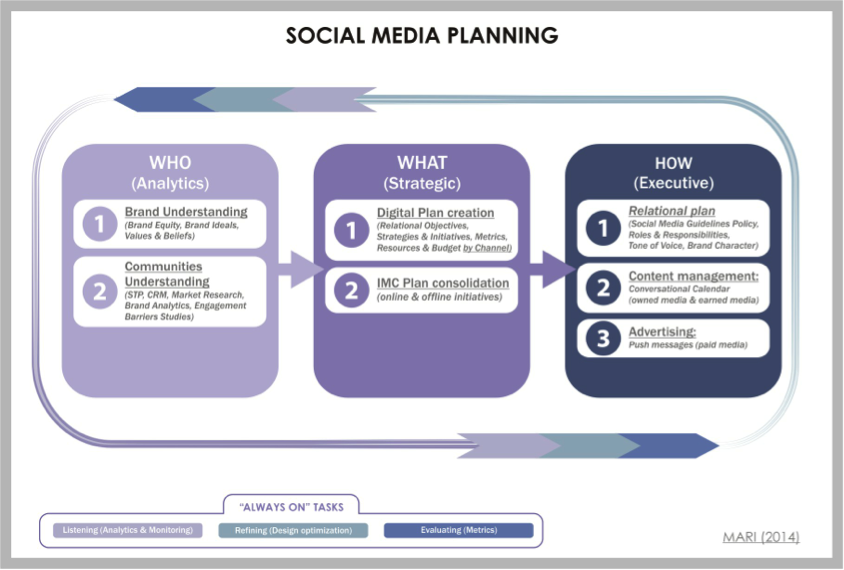Path to delightful relationship on social media
Relationships are dynamic; they develop and vary over time as a consequence of the interactions between the partners and of the variations in the surrounding environment. Relationships do not follow predetermined stages, although a common pattern can be found. The relational development model put forth by Knapp (1984)describes the full trajectory of human relationship development and deterioration. He stated that although the relationship cannot be precisely predicted, certain patterns are likely.
This model is comprised of two sequential stages: coming together and coming apart. In order to be effective, all of the steps in the relationship building process have to follow. Therefore, relationships should be considered as process phenomena (Hinde, 1995).

Fig. 1 - Path to delightful relationship (Consumer-Brand Relationship Development Process) Adapted from Knapp (1994)
The process of coming together has five stages: (1) initiating, in which first impressions of the two parties involved in the relationship are formed; (2) experimenting, in which the parties attempt to find some common ground between each other’s lives; (3) intensifying, in which the parties test the potential of the relationship with varying degrees of self-disclosure; (4) integrating, in which the lives of the two people begin to merge; and (5) bonding, in which the commitment of the relationship is communicated to the rest of the world.
Similarly to human relationships, I believe that consumer-brand relationships follow a defined development process that is referred to, according to marketing terminology, as stages of: awareness, consideration, involvement, engagement, and loyalty.
Exactly like in the widely used communication funnel, brands have five stages, starting with awareness of a product and moving towards its consideration, involvement, engagement, and loyalty. If the relationship is not maintained and revitalized over time, it will probably decrease in intensity and reach a declining stage in which the brand and the consumer move further and further apart.
The highest level of relational intensity can be reached in the “love beyond reasons” status (Roberts, 2004), where the love for a brand is such that his positive attitude towards the brand is sometimes purely irrational and not understood by external actors. An example is the Apple iPhone launch event, where the general public and media criticized thousands of brand lovers for queuing for several hours to buy the latest phone, which had similar characteristics to the previous version. This is definitely the point in people’s minds where all brands would like to find a place.
Particularly important for the definition of the relationship intensity is the context (and the location) in which the conversation happens. It would be rather different if this was initiated by a user in response to a technical issue, either for exposure to an advertisement or proactively by a company. This is similar to human relationships, in which the length and strength of the connection changes often depend on the context in which the initial contact is initiated (for example, meeting someone at a church vs. at a rave party). In a social world, the influence of peers and family members is dramatically important; people increasingly come to know what kind of brands you own, use, and interact with. Judgment, criticism, and suggestions by other influencers will be inevitable when a romantic relationship is made public. Also, accessibility to information, technology, and resources plays a fundamental role in the definition of the relationship quality. The absence of a direct communication channel where a user can effectively communicate with a company can significantly influence the perception of the brand itself. For a romantic couple, a lack of accessibility could mean having a long-distance relationship or not having access to communication technology.
Some of the most frequent issues that I observed during the consumer-brand relationship development process come from the non-realization by the company that
communication massages are more powerful if they take into account the relationship stage that any consumer is in at a given moment.
Alex Mari - Founder & Creative Director of BrandMate - www.brandmate.it



Comments